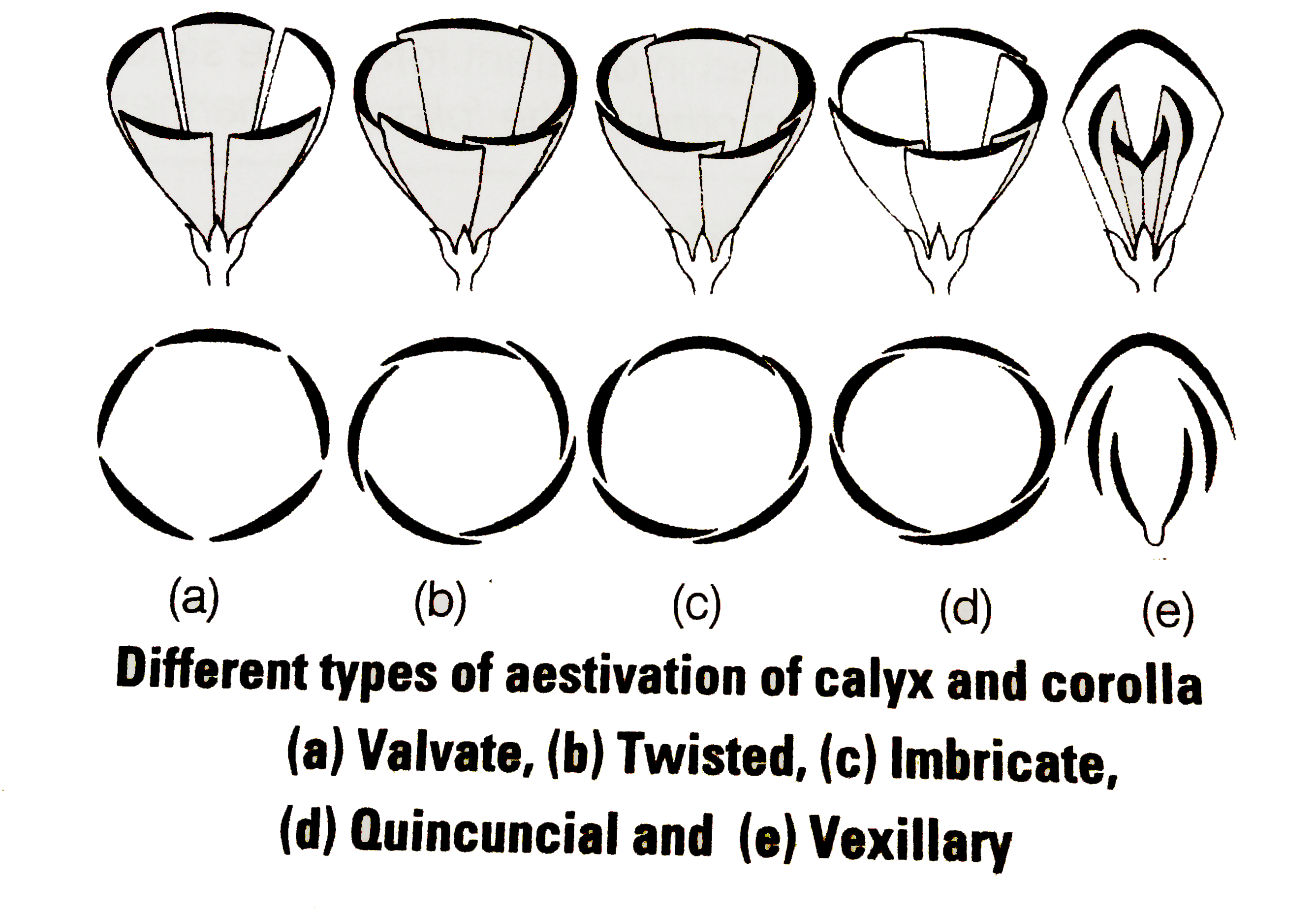The mode of arrangement of sepals or petals in a floral bud is known as aestivation . Draw the various types of aestivation possible for a typical pentamerous flower.
Video Solution
Text Solution
The mode of arrangement of sepals or petals in a flower bud with respect to the members of the same whorl or with each other is known as aestivation . It is of following types
Valvate Margin of adjacent petals or sepals touch each other , but do not overlap, e.g., mustard (Brassica).
Twisted Regular overlapping of petals or sepals occurs in which margin of one petal overlap with the adjacent next one petal, e.g. , China rose (Hibiscus rosa sinensis) .
Imbricate There are five petals arranged in such a way that one petal is completely external and one petal is completely internal, three petals are partially external and partially internal, e.g., Cassia, Callistemon, Caesalpinia.
Quincunical There are five sepals or petals of which two are completely out and two are completely inside, while one is partially out and partially in e.g., Cucurbita (Cucurbitaceae) .
Vexillary It is the charcteristic aestivation of corolla of family -Papilionaceae, in which corolla (petals) are papilionaceous.
The largest petal overlap the two lateral petals (wings) , which in turn overlap the two smallest anterior petals (Keel) e.g., Artobotrys , Polyalthea, Pisum.

|
Topper's Solved these Questions
- MORPHOLOGY OF FLOWERING PLANTSBOOK - NCERT EXEMPLARCHAPTER - MORPHOLOGY OF FLOWERING PLANTSEXERCISE - Short Answer Type Questions
14 Videos
- MINERAL NUTRITIONBOOK - NCERT EXEMPLARCHAPTER - MINERAL NUTRITIONEXERCISE - Long Answer Type Questions
8 Videos
- NEURAL CONTROL AND CO-ORDINATIONBOOK - NCERT EXEMPLARCHAPTER - NEURAL CONTROL AND CO-ORDINATIONEXERCISE - LONG ANSWER TYPE QUESTIONS
3 Videos
Similar Questions
Knowledge Check
The mode of arrangement of sepals or petals in floral bud is known as :-
APhyllotaxyBAestivationCPlacentationDPtyxisThe arrangement of sepals & petals is known as:-
AAestivationBInflorescenceCPhyllotaxyDVenationThe mode of arrangement of sepals or petals in a floral bud with respect to the other members of same whorl is known as
AAestivationBPlacentationCCohesionDAdhesion
If the margins of sepals or petals overlap one anohter but not in any particular direction, then this type of aestivation is known as
View SolutionWhat is aestivation? Describe its various types found in petals.
View SolutionThe arrangement of ovules within the ovary is known as placentation. What does the term placenta refer to ? Draw various types of placentations in the flower as seen TS and VS
View SolutionArrangement of sepals and petal in the bud condition is called
View SolutionThe mode of arrangement of sepals or petals in floral bud with respect to the other members of the same whorl is known as .............. :-
View Solution
